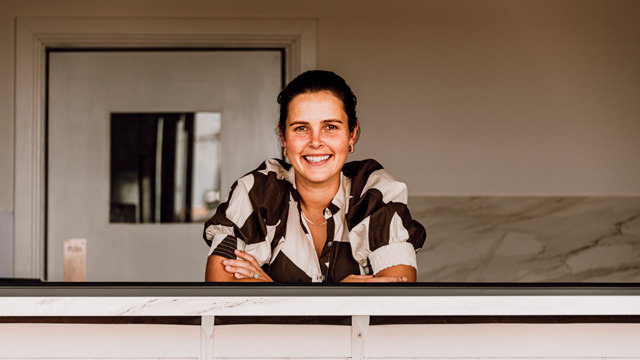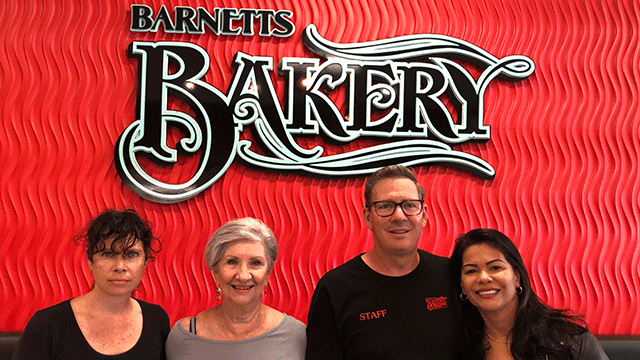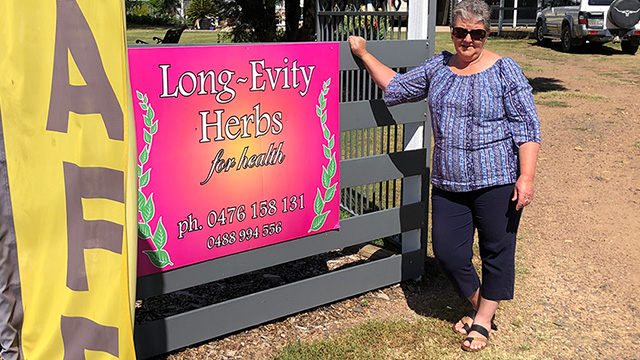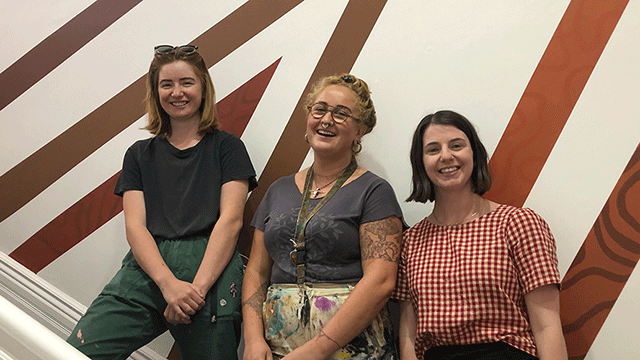Byron Bay Wildlife Hospital
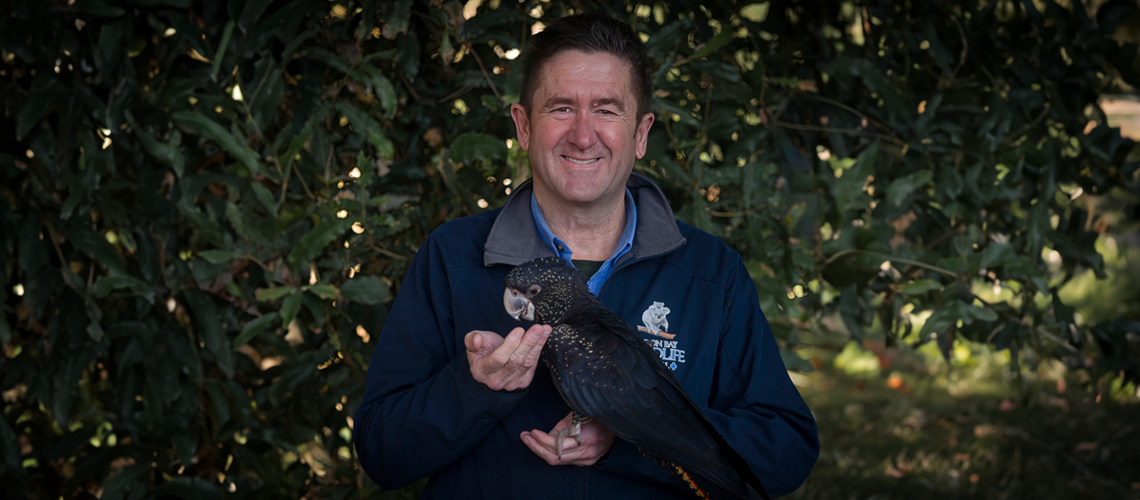
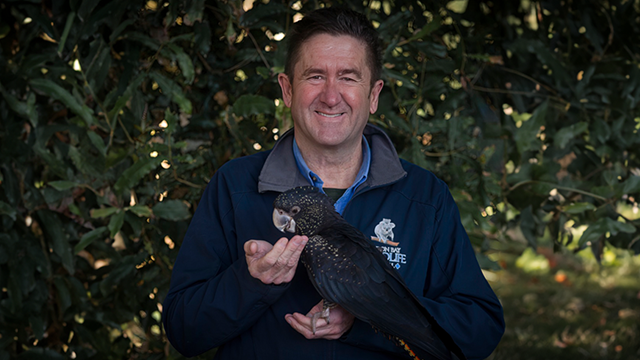
Working tirelessly to help injured wildlife in the Northern Rivers region, Dr. Steven Van Mil (pictured above) and his team at the Byron Bay Wildlife Hospital spend every day caring for our native animals in their purpose built, state-of-the-art mobile hospital.
Meet Dr. Stephen Van Mil
Founder, CEO and Director of the Byron Bay Wildlife Hospital, Dr. Stephen Van Mil knew he wanted to be a vet from the age of five. “I’ve always had a passion for wildlife,” he says.
Throughout his career Stephen has been actively involved in wildlife causes across the world. Working as the on-air veterinary editor for The Today Show during the 90s and 2000s, Stephen traveled Australia, presenting stories and raising awareness about a variety of animals to a national audience.
After decades in the industry, Stephen decided it was time for a change, moving to the Northern Rivers region which would allow him to raise his daughter outside the confines of the city.
After joining a general practice at Lennox Head, Stephen and the practice principal, Dr. Evan Kosack, came up with the idea for the Byron Bay Wildlife Hospital.
“[We] were chatting about what the region needed and what to give back. At that practice then, we saw a lot of wildlife. So, over a beer one night, we decided we needed to build a dedicated wildlife hospital for this region.”
Saving our native wildlife
Everyday across Australia, wildlife is injured with over 10 million dying on our roads each year. When people do stop to help, they are largely restricted to taking animals to general practice veterinary clinics. Unfortunately, Australia suffers from a shortage of vets and treating wildlife requires specialist training and knowledge. Sadly, the outcome for injured wildlife is poor.
Stephen explains: “The anatomy and physiology of wildlife is so different to a dog or a cat and to have the knowledge, skills and expertise to treat that animal properly is rare. And unfortunately, there’s no compensation for that work, it’s all done for free.”
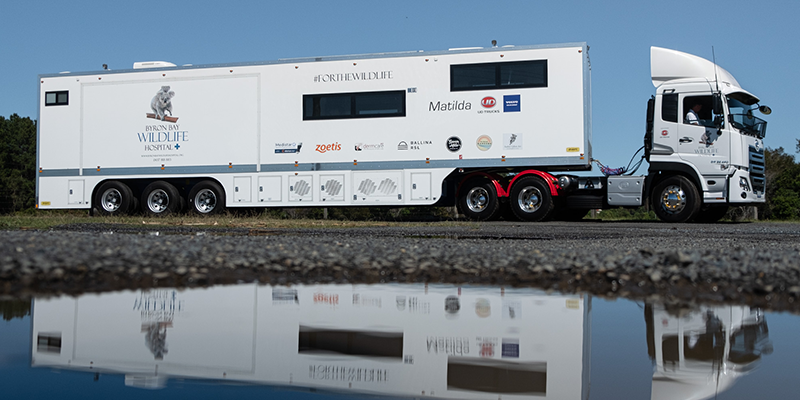
The purpose built mobile hospital, affectionately named Matilda.
Matilda the mobile wildlife hospital
Four years ago, Stephen and Evan came up with the idea of a dedicated wildlife hospital. But finding land, getting approvals, and developing this venture was overwhelming. As the two vets delved further into planning, they fell on the idea of creating something mobile so that it could be built quickly, contain costs, and be able to be moved to anywhere that needed it.
Out of necessity, Australia's largest Mobile Wildlife Hospital – Matilda – was born. Matilda is a custom-built veterinary facility operating from a self-sufficient 22-wheel semi-trailer.
Before construction of the hospital could begin the devastating fires of 2019/20 hit, fires that killed over 3 billion of our native species.
“It was incredibly disturbing watching the devastation across the country,” Stephen remembers. “If we had the mobile hospital ready, we could have been there. We weren’t ready for those catastrophic fires but that really gave us a kick to say get on with it.”
Matilda’s mobility means she can be deployed to care for wildlife anywhere in Australia with state-of-the-art medical equipment, treatments, and diagnostics. With ongoing climate related disasters and more and more of our native species facing extinction, the hospital offers new hope.
“We can turn up anywhere on the mainland in times of crisis. We are ready, willing and able to be deployed wherever, whenever.” Stephen continues: “There really hasn’t been any facility like this that can do what we do, it’s breaking new ground.”
Since starting the hospital in September 2020, the team at Byron Bay Wildlife hospital has saved thousands of native wildlife, treating 194 different threatened species in New South Wales and forming influential partnerships with groups like the NRMA. Amazingly, over 50% of animals treated by the mobile hospital are returned to the wild.
We can all play a part
“Almost all the reasons wildlife gets presented to the hospital are due to human activity,” explains Stephen, with half the animals that come into the hospital being hit by cars.
As well as saving injured wildlife, Stephen views the role of the hospital as educating the community. For example, Byron Bay Wildlife Hospital launched the wildlife rescue kit in partnership with the NRMA so drivers can do more to help injured wildlife found on the roads.
To go further to keep Australia's native wildlife Stephen has a couple of tips for each of us:
- Increase vigilance on the roads at dawn and dusk, when wildlife is most active, to help prevent accidents.
- Support reforestation efforts to ensure a place for Australian wildlife to thrive.
Byron Bay Wildlife Hospital’s successful release rate can only be achieved when there is suitable environment to release animals into. The hospital works closely with community groups to find safe places to release rescued animals. As a result of this work, despite the destruction of natural habitat over recent decades, Stephen is noticing growing reforesting efforts, especially in the Northern Rivers region.
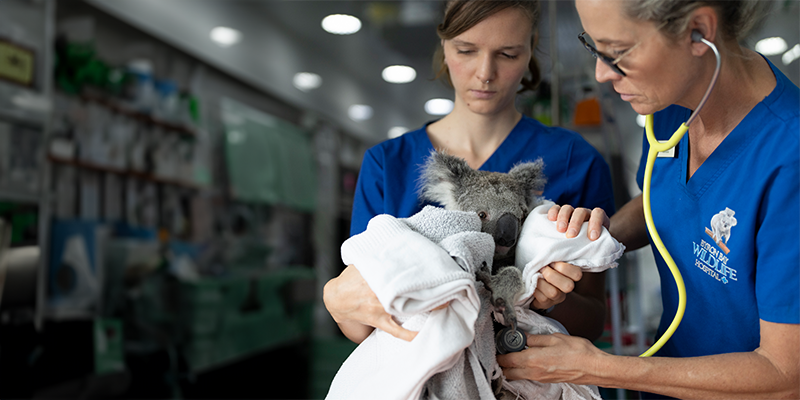
Byron Bay Wildlife Hospital staff caring for an injured koala.
A hopeful future
While Byron Bay Wildlife Hospital has accomplished so much in a short space of time, there’s so much more to be done. The team dreams of a bricks and mortar hospital and a fleet of Matildas, travelling across Australia to help wildlife in need.
“If we could put one of these [mobile hospitals] in every state and territory of Australia we would,” says Stephen. “We’d like to go 24/7. It’s been a busy three years but it’s not slowing down.”
With a skilled, passionate, and dedicated team, the hospital staff say saving an animal that wouldn’t have made it without help is the greatest reward.
Get involved
The Byron Bay Wildlife Sanctuary– an extension of the hospital – is a must-visit stop on any trip to Byron. Sitting on the Old Pacific Highway (now Hinterland Way) it acts as a home to a wide array of wildlife. With free keeper talks, a free flight bird show every day and a fantastic café - it’s the perfect stopover for the family.
Visit the hospital online at www.bryonbaywildlifehospital.org and show your support.
Want more hidden gems like this?
Our Meet the Locals series helps travellers discover small businesses off the beaten track.







